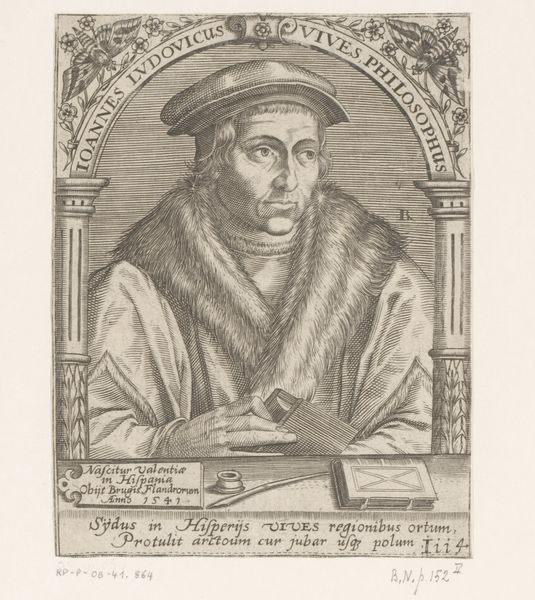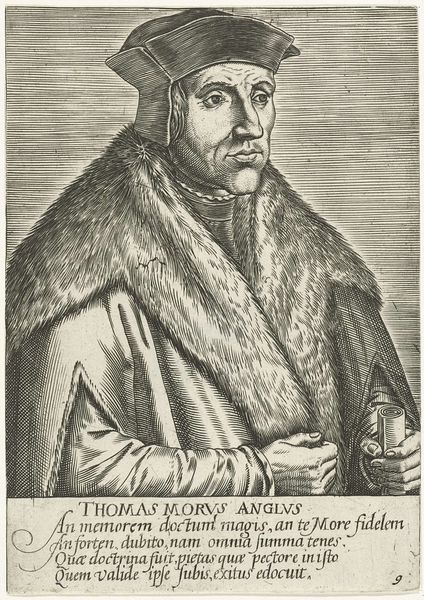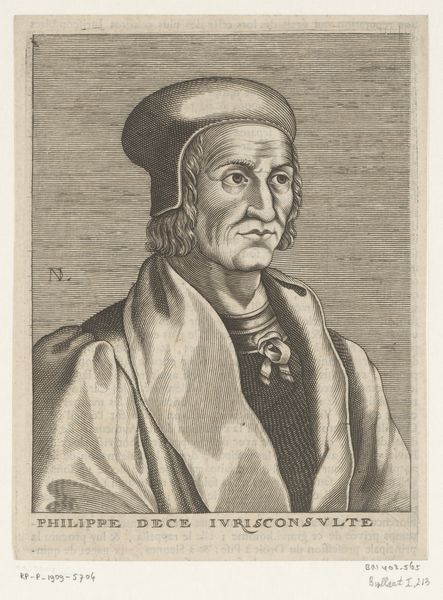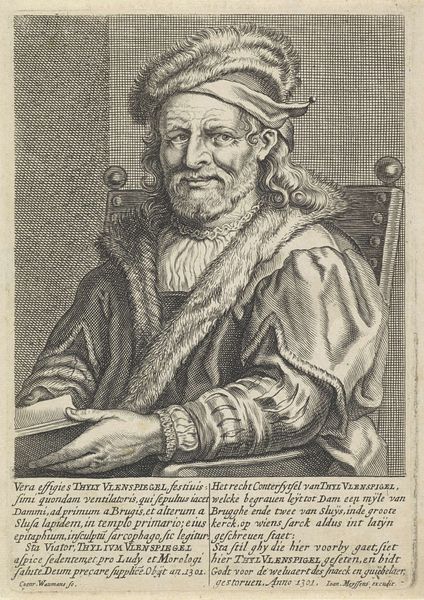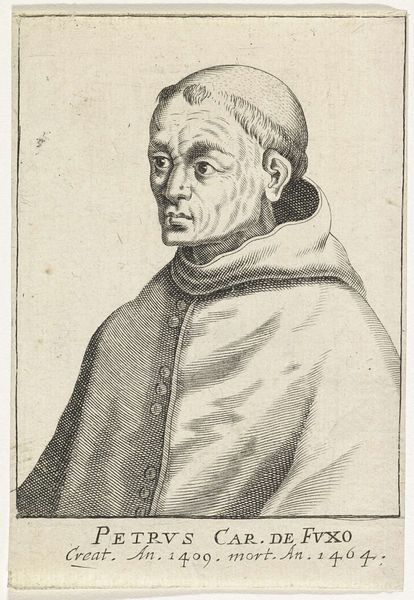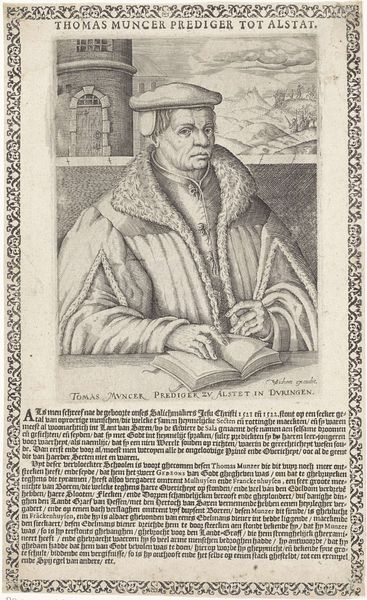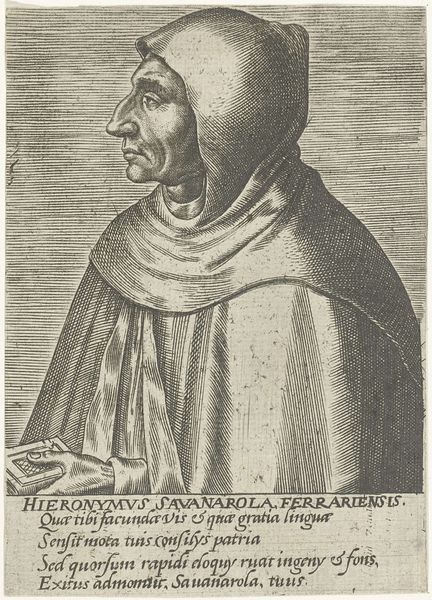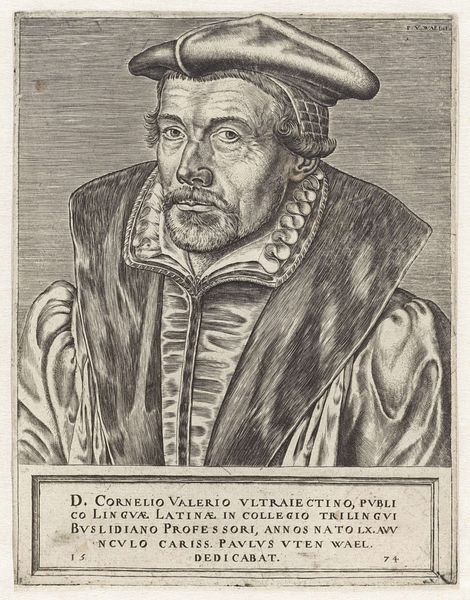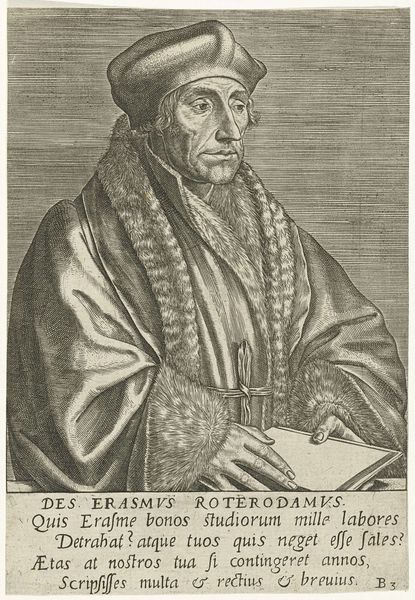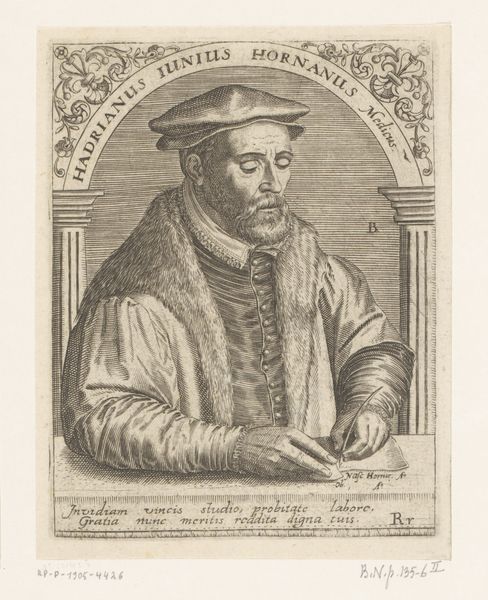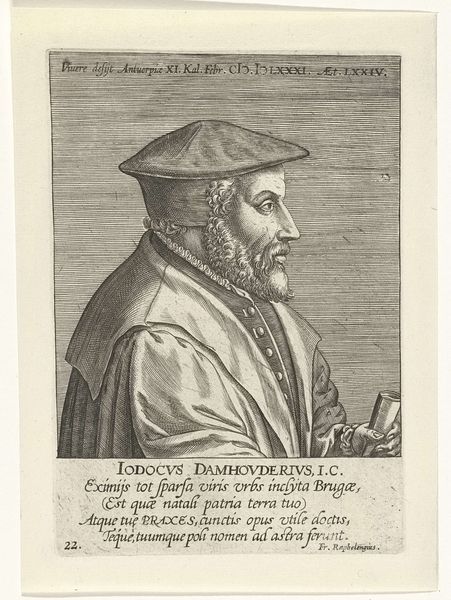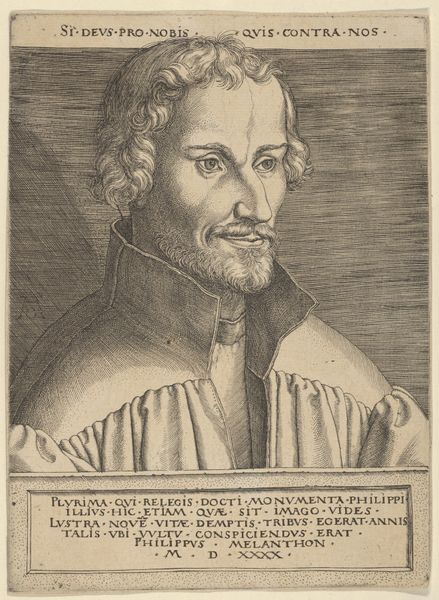
print, engraving
#
portrait
# print
#
old engraving style
#
11_renaissance
#
portrait reference
#
portrait drawing
#
history-painting
#
engraving
Dimensions: height 162 mm, width 116 mm
Copyright: Rijks Museum: Open Domain
Editor: Here we have an engraving, “Portret van John Fischer,” made in 1572. The print depicts a serious looking gentleman dressed in formal robes. He seems important. What can you tell me about this work? Curator: Well, engravings like this served a crucial role in disseminating information and constructing public figures in the Renaissance. This image, made after Fischer's execution in 1535, functions less as a straightforward portrait and more as a carefully crafted piece of political imagery. Notice the Latin inscription; it directly relates Fischer to notions of virtue, genius, and piety even in death. It clearly wants to position him as a martyr. How do you think that framing worked politically? Editor: So it's about influencing public perception? Was this aimed at a specific audience or cause? Curator: Exactly. These images circulated widely and shaped how individuals were perceived and remembered. Given that Fischer was executed for refusing to acknowledge Henry VIII as the Supreme Head of the Church of England, the image aimed to solidify his status amongst Catholics loyal to Rome who refused Henry’s reforms. It challenged Henry's authority by promoting Fischer’s sanctity, creating a powerful counter-narrative within a politically turbulent era. Do you see the ways in which visual culture became a battleground for religious and political dominance? Editor: That's fascinating. It completely reframes my initial view of this being a simple portrait; it's much more than that! I hadn't considered how actively images participated in these conflicts. Curator: Indeed! This portrait reveals the ways in which print media helped shape collective memory and influence social discourse. Editor: Thanks. I now have a better understanding of the important role of art and printmaking in social and political change.
Comments
No comments
Be the first to comment and join the conversation on the ultimate creative platform.
